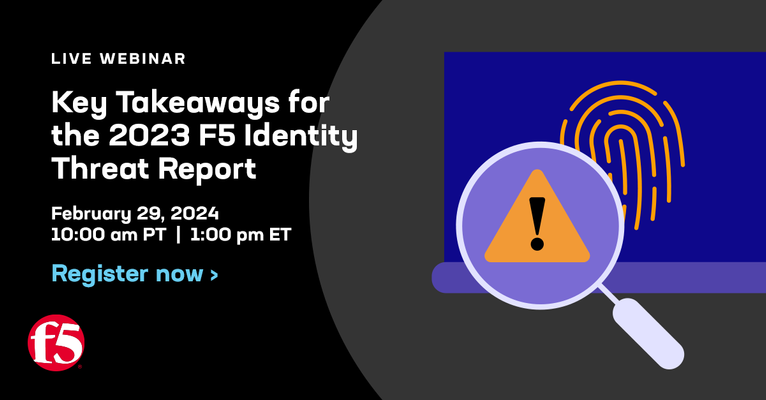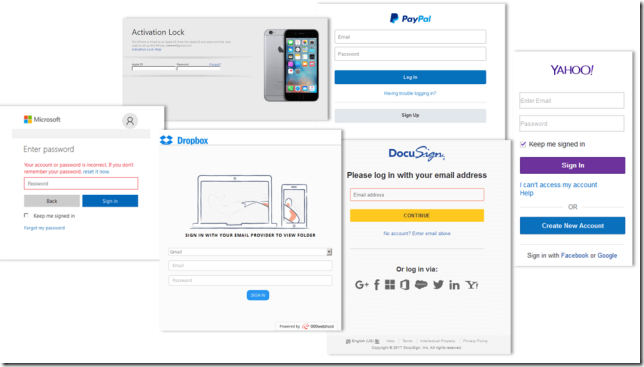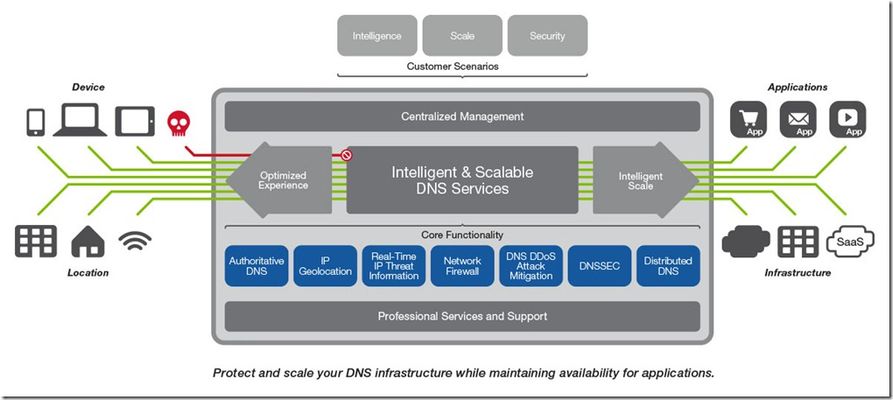phishing
11 TopicsSMTP Smugglers Blues
The SMTP protocol has been vulnerable to email smuggling for decades. Many of the mail servers out there have mitigations in place to handle this vulnerability but not all of them, especially the quick libraries and add-ons you can find on web sites. Protecting your server from these attacks is simple with F5 BIG-IP Advanced WAF and our SMTP Protocol Security profiles. Read to learn how to give those bad actors the “Smugglers Blues”616Views2likes2CommentsGLOBAL Live Webinar: Key Takeaways for the 2023 F5 Identity Threat Report
This event is open to all F5 users regardless of geographic location. Date: Thursday, February 29, 2024 Time: 10:00am PT | 1:00pm ET Speakers: Sander Vinberg, Threat Research Evangelist, F5 and Corey Marshall, Director Solutions Engineering What's the webinar about? Changes in how organizations build, run, and secure information systems have also shifted how we look at authentication and access control. The emerging concept of identity is transforming the ways humans and non-human actors use data and compute power. Meanwhile, organizations’ focus on identity also means that it has become a focus for attackers. Organizations must stay vigilant by addressing the latest attack techniques– and take a proactive approach to mitigating identity risks. Join Corey Marshall, Director of Solutions Engineering,and Sander Vinberg, Threat Researcher and lead author on the 2023 Identity Threat Report: The Unpatchables, as they share findings from the report and discuss their practical implications for securing digital identities. They will explore the top threats, highlight what you need to watch for, and specific F5 technologies that can help you address these threats. Attend this webinar to discover: The state of credential stuffing, including preferred targets The evolution of phishing, including tactics and counter-countermeasures What the growth of MFA bypass techniques could mean for you Learn more, register today181Views2likes0CommentsOf Ransom and Redemption: The 2021 Application Protection Report
The information security professional’s mission has gradually become extraordinarily complex. At times, this mission borders on contradiction. Quite often, responsibility for the various components that form an enterprise environment is spread not only among multiple teams within the enterprise but also among vendors, partners, and service providers. In this 2021 Application Protection Report by F5 Labs, Sander, Ray, Shahnawaz, and Malcom look at the breaches in the past year as a series of attacker techniques, explore the outcomes, and provide some recommendations for controls you can implement in your environment. Some Highlights Two-thirds of API incidents in 2020 were attributable to either no authentication, no authorization, or failed authentication and authorization. In 2020, four sectors—finance/insurance, education, health care, and professional/technical services—experienced a greater number of breaches than retail (the leader in 2018 and 2019), partly driven by the growth in ransomware. The most important controls are privileged account management, network segmentation, restricting web-based content, data backup, and exploit protection (i.e., WAF). DevCentral Connects featuring Sander Vinberg Or, if you prefer, listen to Jason & John talk to Sander, directly, on DevCentral Connects.243Views0likes0CommentsThe F5 Labs 2019 Application Protection Report
For the past years, F5 Labs has produced the Application Protection Research Series. First as individual reports and then as a series of episodes released during the year. We have just released the 2019 report final edition, which places years of security trends and patterns into a single long-term picture, to get away from news cycles and hype that only focus on new threats or vulnerabilities that may not even be applicable. This perspective also allows us to see linkages between the different subdomains and foci that make up the complex and porous field we call information security. This new comprehensive report pulls together the various threats, data sources, and patterns in the previous episodes into a unified line of inquiry that began in early 2019, picking up where the 2018 Application Protection Report left off, and concluded in early 2020 with updated data on 2019 breaches and architectural risk. One of the underlying themes for the 2019 series has been that changes in the ways that we design, build, and deploy applications have been drivers for risk. From third-party services driving the rise of an injection attack known as formjacking, to a growing list of seemingly avoidable API breaches, to the prevalence of platforms running on languages with old and documented flaws, there has been a good deal of goalpost movement for defenders. The implication is that many of the people who are making decisions with significant ramifications for security—system owners, application architects, DevOps teams—are generally placing other priorities ahead of security. Based on the acceleration of trends in 2019 that we identified from 2018, it seems that this tension will characterize the next few years of the security arms race. Our top conclusions in this report include: Access attacks predominant except for retail Retail breaches increasingly dominated by formjacking Breach modes driven more by application architecture than by traditional sector Get the Full report here https://www.f5.com/labs/articles/threat-intelligence/2019-application-protection-report Executive Summary https://www.f5.com/labs/articles/threat-intelligence/application-protection-research-series-executive-summary411Views1like0CommentsF5 Labs 2019 TLS Telemetry Report Summary
Encryption standards are constantly evolving, so it is important to stay up to date with best practices. The 2019 F5 Labs TLS Telemetry Summary Report by David Warburton with additional contributions from Remi Cohen and Debbie Walkowski expands the scope of our research to bring you deeper insights into how encryption on the web is constantly evolving. We look into which ciphers and SSL/TLS versions are being used to secure the Internet’s top websites and, for the first time, examine the use of digital certificates on the web and look at supporting protocols (such as DNS) and application layer headers. On average, almost 86% of all page loads over the web are now encrypted with HTTPS. This is a win for consumer privacy and security, but it’s also posing a problem for those scanning web traffic. In our research we found that 71% of phishing sites in July 2019 were using secure HTTPS connections with valid digital certificates. This means we have to stop training users to “look for the HTTPS at the start of the address” since attackers are using deceptive URLs to emulate secure connections for their phishing and malware sites. Read our report for details and recommendations on how to bolster your HTTPS connections.383Views1like0CommentsLightboard Lessons: What is Phishing and how can I guard against it?
Phishing has been around for years, but it is still a very relevant and dangerous attack. These attacks are a major source of profit for cyber criminals, and they can be very difficult to defend. So, why is there so much phishing still going on? The reason is simple: it’s easy and it works. Attackers don’t have to worry about hacking through a firewall, finding a zero-day exploit, deciphering encryption, etc. The hardest part of these attacks is creating a good email to get people to click on, and a fake website for the victims to land on. In this video, we explore the details of phishing and also talk about how you can defend yourself (or your organization) against these attacks. F5 Labs Phishing and Fraud Report (Note: it's a safe link to click on...I promise!!)460Views0likes0CommentsHow Malware Evades Detection
Malware loves encryption since it can sneak around undetected. F5Labs 2018 Phishing & Fraud Report explains how malware tricks users and evades detection. With the cloning of legitimate emails from well-known companies, the quality of phishing emails is improving and fooling more unsuspecting victims. Attackers disguise the malware installed during phishing attacks from traditional traffic inspection devices by phoning home to encrypted sites. Let's light up how evasion happens & get your F5 Labs 2018 Phishing & Fraud Report today. ps277Views0likes0CommentsF5 Labs 2018 Phishing & Fraud Report
The F5 Labs 2018 Phishing & Fraud Report is out! In this report, the F5 Labs team specifically investigated the rise of phishing and fraud during the 'holiday shopping season,' beginning in October and continuing through January. Fraud and phishing attempts increase 50% right now, from October to January and phishing was the root cause of 48% of the data breaches that F5Labs investigated. It's important to check out the report because it explains how phishing works, how to defend yourself against phishing attacks and the importance of training employees to recognize malicious emails. Some of the crazy stats they found include 93% of phishing domains offered a secure (https) version of the site to appear more legitimate and 68% of malware sites used encryption certificates (https), meaning 68% of Command & Control servers use port 443. The crooks are going through the trouble of getting SSL certificates for their fake, but real looking sites. Take a look at some of these. Do any of these web logins look familiar? How about this one? Or maybe this one? If so then you need to check out the 2018 Phishing and Fraud report from F5 Labs because they were all fake. Attackers are getting so good at creating fake websites that impersonate the real thing, most people can’t tell the difference. One thing is for certain, employee click-through rates on phishing emails drop from 33% to 13% with security awareness training: 33% — 1-5 training events 28% — 6-10 training events 13% — 11 or more training events You can check out the Preview Video here and get your report at https://www.f5.com/labs ps336Views1like0CommentsDon’t Take the Impostor’s Bait
Phishing has been around since the dawn of the internet. The term was first used in an AOL Usenet group back in 1996 but it wasn’t until 2003 when many baited hooks and lures started dropping. Popular transaction destinations like PayPal and eBay were some of the early victims of these spoofed sites asking customers to update their personal and credit card information. By 2004, it was a full-fledged ‘get rich quick scheme’ with many financial institutions – and their customers – as targets. Oxford Dictionary defines Phishing as, ‘The fraudulent practice of sending emails purporting to be from reputable companies in order to induce individuals to reveal personal information, such as passwords and credit card numbers.’ You’ve seen it, the almost perfect looking email with actual logos, images and links to a reputable company only to have it go to a slick looking replica complete with a login form. If you aren’t paying attention and do enter your credentials, you’ve just given a crook access to your money. The Anti-Phishing Working Group (APWG) reports a 250 percent jump in the number of detected phishing websites between October 2015 and March 2016. More than in any other three-month span since it began tracking back in 2004. That’s around 230,000 unique phishing campaigns a month. And as recent as last week, American Express users were hit with a phishing email offering anti-phishing protection. Go figure. If you clicked the link, you were taken to a bogus Amex login page which asks for all the important stuff: SSN, DoB, mother’s maiden, AMEX number plus security code and a few other vitals. When complete, you’ll be redirected to the authentic site so you think you’ve been there all along. That’s how they work their magic. A very similar domain URL and all the bells of the original, including the real customer service 800 number. You can combat it however. F5’s WebSafe Web Fraud Protection can secure your organization (and your customers) against the evolving online fraud and you do not need any special client to detect it. WebSafe inserts an obfuscated JavaScript code which can detect malware like bait, mandatory words or if the fake was loaded from a different domain. It can validate source integrity like comparing fields for multiple users and detect threats like automatic transactions. Alerts are sent to an on premise dashboard and can also be forwarded to F5’s Security Operations Center (SOC). If you are configuring malware protection for the login and transaction pages for a financial application, it’s as simple as adding an Anti-Fraud profile to your VIP. First, you create an anti-fraud profile: Then indicate which URL should be watched and the action: Then enable Phishing detection: And when a phishing attach occurs, both the domain and the username of the victim get reported to the dashboard: The code that’s inserted is a little piece of JavaScript added to your website to detect the malicious activity. No action is needed on the part of the user since everything is handled within BIG-IP. This tiny piece of code will dramatically reduce fraud loss and retain the most important asset in business—customer confidence. Don't get fooled by a faker. ps Related: Security Sidebar: Spear Phishing Still Happens…A Personal Story Phishing you say, well that’s not my problem Getting Started with WebSafe Phishing Activity Trends Report (pdf)408Views0likes1CommentIs Your DNS Vulnerable?
This article originally appeared on F5.com on 7.29.15. A recent report from The Infoblox DNS Threat Index (in conjunction with Internet Identity) shows that phishing attacks has raised the DNS threat level to a record high of 133 for second quarter of 2015, up 58% from the same time last year. The biggest factor for the jump is the creation of malicious domains for phishing attacks. Malicious domains are all those very believable but fake sites that are used to mimic real sites to get you to enter sensitive details. You get a phishing email, you click the link and get sent to a financial site that looks and operates just like your real bank site. If you're fooled and enter your credentials or other personal information, you could be giving the bad guys direct access to your money. These sites can also pretend to be corporate portals to gather employee credentials for future attacks. Along with the malicious domains, demand for exploit kits also helped propel the DNS threat. Exploit kits are those wonderful packaged software that can run, hidden, on websites and load nasty controls and sniffers on your computer without you even knowing. The Infoblox DNS Threat Index has a baseline of 100, which is essentially the quarterly averages over 2013 and 2014. In the first quarter 2015, the threat index jumped to 122 and then another 11 ticks for Q2 2015, hitting the high mark. Phishing was up by 74% in the second quarter and Rod Rasmussen, CTO at IID, noted that they saw a lot of phishing domains put up in the second quarter. You'd think after all these years this old trick would die but it is still very successful for criminals and with domain names costing less than $20 and available in minutes, it is a cheap investment for a potentially that big score. DNS is what translates the names we type into a browser (or mobile app, etc.) into an IP address so that the resource can be found on the internet. It is one of the most important components to a functioning internet and as I've noted on several occasions, something you really do not think about until it isn't working...or is hacked. Second to http, DNS is one of the most targeted protocols and is often the source of many attacks. This year alone, the St. Louis Federal Reserve suffered a DNS breach, Malaysia Airlines' DNS was hacked, and Lenovo.com to name a few. In addition, new exploits are surfacing targeting vulnerable home network routers to divert people to fake websites and DNS DDoS is always a favorite for riff-raff. Just yesterday 3 people were sent to prison in the DNS Changer Case. With more insecure IoT devices coming on line and relying on DNS for resolution, this could be the beginning of a wave of DNS related incidents. But it doesn't have to be. DNS will become even more critical as additional IoT devices are connected and we want to find them by name. F5 DNS Solutions, especially DNSSEC solutions, can help you manage this rapid growth with complete solutions that increase the speed, availability, scalability, overall security and intelligently manages global app traffic. At F5 we are so passionate about DNS hyperscale and security that we are now even more focused with our new BIG-IP DNS (formerly BIG-IP GTM) solution. ps @psilvas Related: Phishing Attacks Drive Spike In DNS Threat The growing threat of DDoS attacks on DNS Infoblox DNS Threat Index Hits Record High in Second Quarter Due to Surge in Phishing Attacks Infoblox DNS Threat Index Eight Internet of Things Security Fails Intelligent DNS Animated Whiteboard (Video) CloudExpo 2014: The DNS of Things (Video) DNS Doldrums Technorati Tags: breach,dns,f5,phishing,securitymalware,threats,silva Connect with Peter: Connect with F5:333Views0likes0Comments




